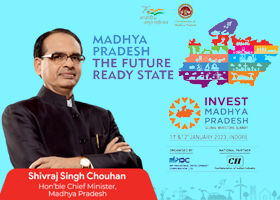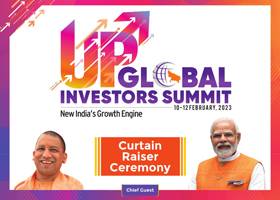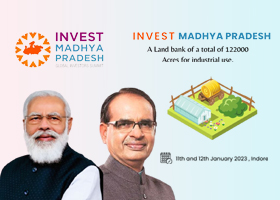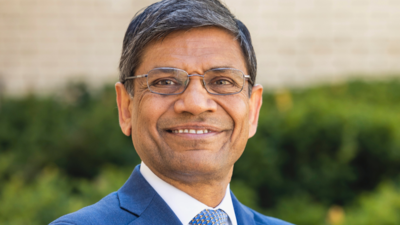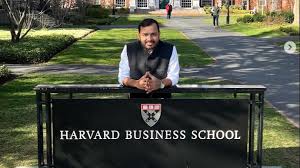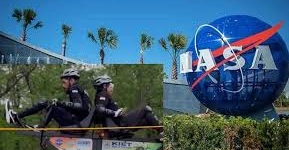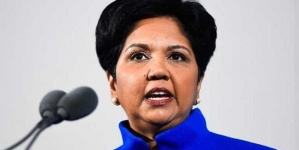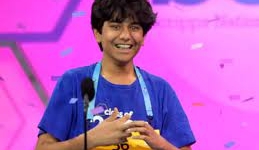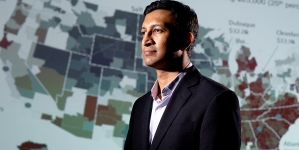-
LONDON: Run For Modi” Event In London To Drum Up Support For PM Modi - 15 hours ago
-
LONDON: Indian-Origin Candidate On How He Plans To Win London Mayoral Polls - 2 days ago
-
HARVARD: No Country Is Perfect”: Physics Wallah Urges Indian Students At Harvard, Stanford To Return - April 27, 2024
-
CALIFORNIA: PM Modi Put India On World Map As Credible Innovator- IT Industry Leaders - April 26, 2024
-
WASHINGTON: Indian Students Bag NASA Awards For Human Exploration Rover Challenge - April 25, 2024
-
LONDON: Indian-Origin Teen In UK Gets “Life-Changing” Cancer Treatment - April 25, 2024
-
SILICON VALLEY: All About Pavan Davuluri, New Head Of Microsoft Windows - April 25, 2024
-
LONDON: UK’s India Gate To Commemorate Role Of Indian Soldiers From World Wars - April 24, 2024
-
HARARE: Shri Bramha Kumar appointed as the next Ambassador of India to the Republic of Zimbabwe - April 23, 2024
-
LONDON: Indian-Origin Principal Wins UK Legal Challenge Over School Prayer Ban - April 23, 2024
MISSOURI: We are building a stronger pipeline of students from India, says Indian-American chancellor of University of Missouri Kansas City
MISSOURI: Dr C. Mauli Agrawal is chancellor at the University of Missouri Kansas City since June 2018. Earlier he held other senior academic positions including interim-provost, vice president for research and dean of engineering at the University of Texas at San Antonio. A Ph.D. from Duke University, MS from Clemson University and a B. Tech. from IIT-Kanpur; Dr Agrawal has been a well-known researcher before taking up the current administrative role, having specialised in the area of orthopaedic and cardiovascular biomaterials and implants. He spoke to Ishani Duttagupta on various topics including his outreach efforts towards Indian students and the challenges that he faced in his immigrant journey.
Edited excerpts from the interview.
You have held several prominent roles in academia and for the past few years you have been at the helm of leadership at UMKC – what do you feel have been some of the highlights of your journey?
My Indian heritage has taught me that the most important treasures are my family and my best accomplishments are at home rather than at work. I am fortunate though to have several awards, accolades and citations in the field of research and publications and it’s hard to pick just one piece over the others. But at UMKC, in the past five years, we have hit a good trajectory. Last year, we had the highest student retention and graduation rate in a decade. We have set an all-time record in fund raising; doubled research expenditure and tripled the money raised for research.
We have created a culture of care which is palpable on this campus. My greatest joy comes twice every year when I stand on the stage at the graduation ceremony on behalf of the staff and faculty, handing out the diplomas to our students and shaking hands with them. To see the joy on their faces and their families cheering gives me the perspective on why we do this work of changing lives and for me to be a part of it is the crowing jewel.
You have done a lot of outreach efforts; do you see a growing number of students from India choosing UMKC since you have taken over as chancellor?
In our census during the past year, we have found that we have had a high number of international students; which is higher than many of the larger universities that are close by. Of this number, almost 1000 were graduate students from India. There was a pent up demand from the past few years, with the previous White House administration sending out the message that it was not very friendly towards international students; followed by the pandemic and international travel bans. Last year and the year before there was a spike in recruitments from India; which may be dying out a little this year. We are attracting the most talented students from India; which is mostly through word of mouth promotions. But that’s not enough and we don’t only want to rely on word of mouth. Last January, I went on a two-week trip to India with our provost and vice president for academic affairs, visiting some of the universities from where most of our students come from. This is to build a stronger and steady pipeline of students and to talk to Indian universities about how we can work together on research collaborations.
I intend to go back again this coming year in Spring to work with other universities. India is a large country and to be travel efficient, we had focussed on the South in our first visit. We plan to go back to the northern part of the country on the next visit. India and the US are moving closer geo-politically, and more academic collaborations too are a part of that.
You are an alumnus of IIT Kanpur – are you still connected with your alma mater and do you participate in alumni activities?
I am not as much connected as I want to be because I need to prioritise my time. But I do keep up with what’s happening there through the newsletters. I was honoured when I received a distinguished alumnus award from IIT-K. It was the most solid education that I received there. Several of us with ties to the IITs, who have risen to senior positions in academia in the US as presidents and chancellors, have an informal group to meet on a call once a month to chat and learn from each other and share advice. And we all acknowledge that we wouldn’t have been in these positions if we didn’t have the solid foundational educational base that we got in India. I got a solid engineering education at IIT-K; one of the best in the world; and I’m grateful for that.
There are several Indian Americans in senior academic roles – do you think there is something special about Indian immigrants that make them suitable for these roles?
You have got to follow the trail; first, there’s the solid foundational education in India followed by the US immigration laws. Before the 1960s, the US laws were racist and Indians were not allowed as immigrants. After that changed, the small number of Indians who went to the US were highly educated and skilled with most taking up jobs in academia. Many of them have worked their way up over the years and reached top positions in American academia. They also had the immigrant spirt of being risk takers who left their own country to come to America to seek success. It is a combination of all these ingredients put together; there will be many more Indian Americans rising to top positions in academia and in industry as well.
Your journey to the US was for higher education – do you think that Indian students who go to the US now for higher studies face far bigger challenges than in your times because of immigration issues?
The immigration piece may be tougher now but back then there were different challenges. When the first waves of immigrants from India went to the US in the 1960s and 1970s; they were not well recognised and faced discrimination and racism. They dealt with those issues and despite that were able to significantly contribute to the community and society and thrive themselves. It was because of the previous generation of immigrants, who laid the path, that Indian professionals such as academics, doctors and techies now have widespread acceptance in the US. Indian students who arrive in the US now face different challenges. Immigration lines are getting longer and I empathise with those who have to wait for several years to get a green card.
Your own cutting edge research is focused on orthopaedic and cardiovascular biomaterials and implants – do you see the importance of this area of study growing in the coming years?
I am not doing research work anymore and am now focussed on my full-time job as an administrator; these are some choices that we have to make. But even though I am now contributing towards academia in a different way; I rode the crest in orthopaedic and cardiovascular biomaterials and implants research as that field became popular. With more widespread healthcare; people are living longer but are not necessarily healthier and in some point in life orthopaedic and cardio vascular issues will be faced by most south Asians. India now has the world’s largest population and India needs to be prepared as its population gets older and people live longer. In fact, in the field of bio-engineering, India has some catching up to do.
Universities in the US are emphasising on research because the world is changing and knowledge is being generated every second. Even as an administrator, I am focussed on research because university teaching needs to be cutting edge and up to date. We need to keep pace with the generation of knowledge which will come from scientific research and should inform classroom instruction on a daily basis; since everything becomes obsolete quickly. Research, especially in science, is for the benefit of mankind and has to move from labs to commercialisation to the public; and in the case of biomedical disciplines, to the patient. Scientific method should be taught to all students to figure out what’s right and what’s not.
Please share some of the challenges in your journey as an Indian immigrant in the US?
It has been a heck of a ride in positive way and I have been able to live the immigrant dream in America. I came here under humble circumstances, with a small suitcase and $100 but also with the unreasonable optimism that only a young person can have. The environment in the US gives immigrants the opportunity to rise and that is what makes it special. I was grounded in education that I had received in the world’s largest democracy and moved to the world’s oldest democracy; I got the best of both worlds. Now it’s time to bring the two worlds together which is the reason why my office is emphasising on setting up collaborations in India.
Do you still have a lot of ties with India?
My wife is American and it’s a tradition in our family to celebrate both Diwali and Christmas; we also have Indian food a couple of times a week. On a personal note, my mother spent the last 14 years of her life with us in the US and my children were fortunate to learn Indian traditions from her. She also taught my wife to cook Indian food. But I do miss enjoying the chaat on the streets in India. I look forward to more work trips to India and also connecting and travelling on a personal basis.
